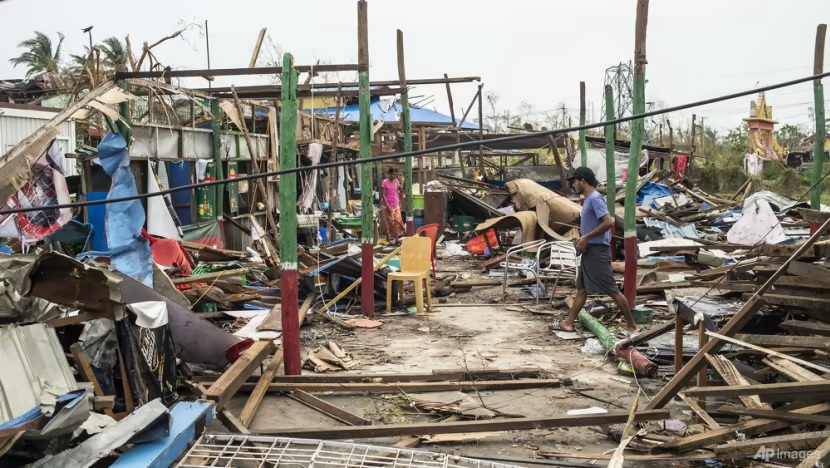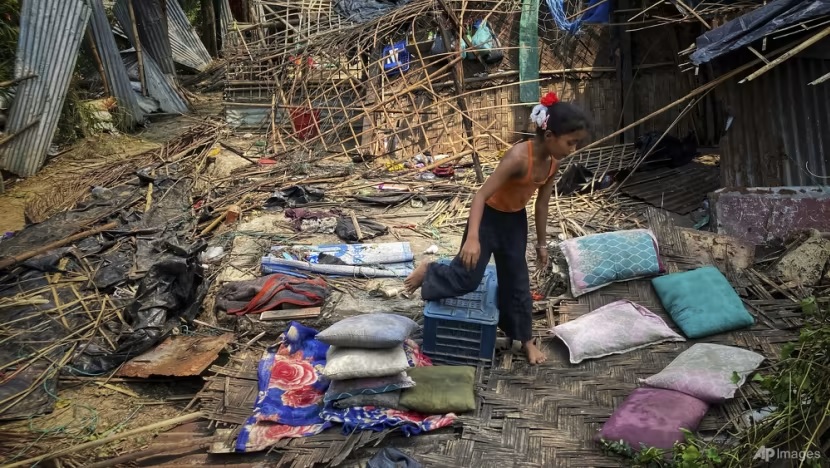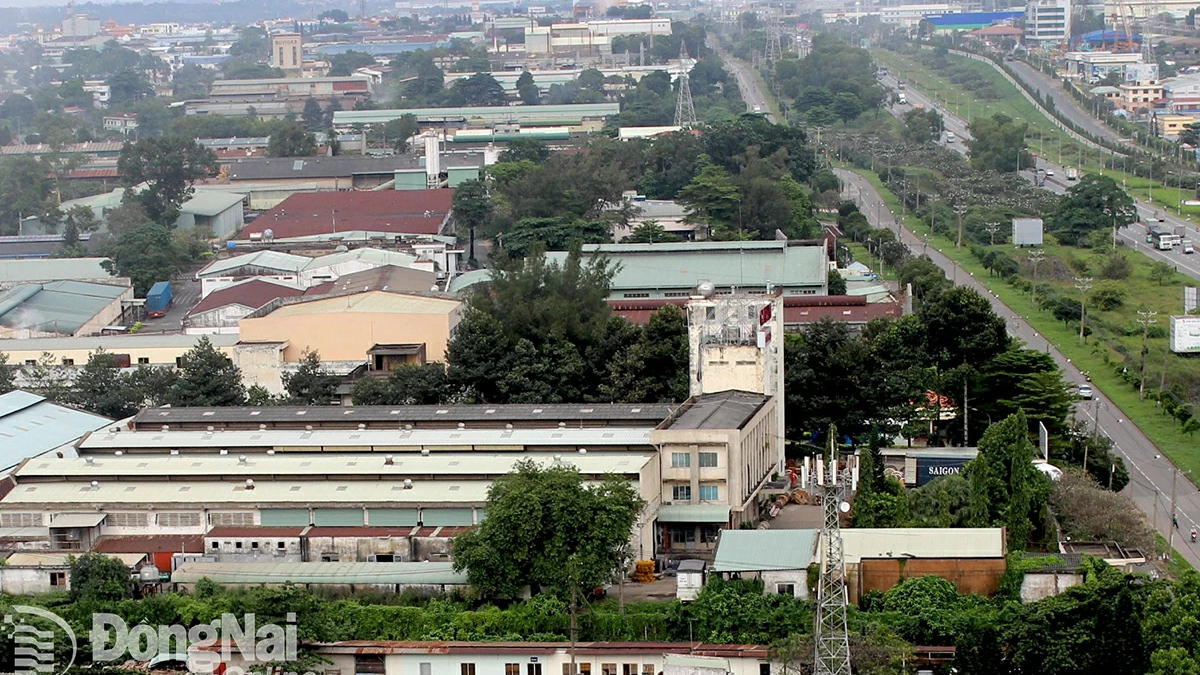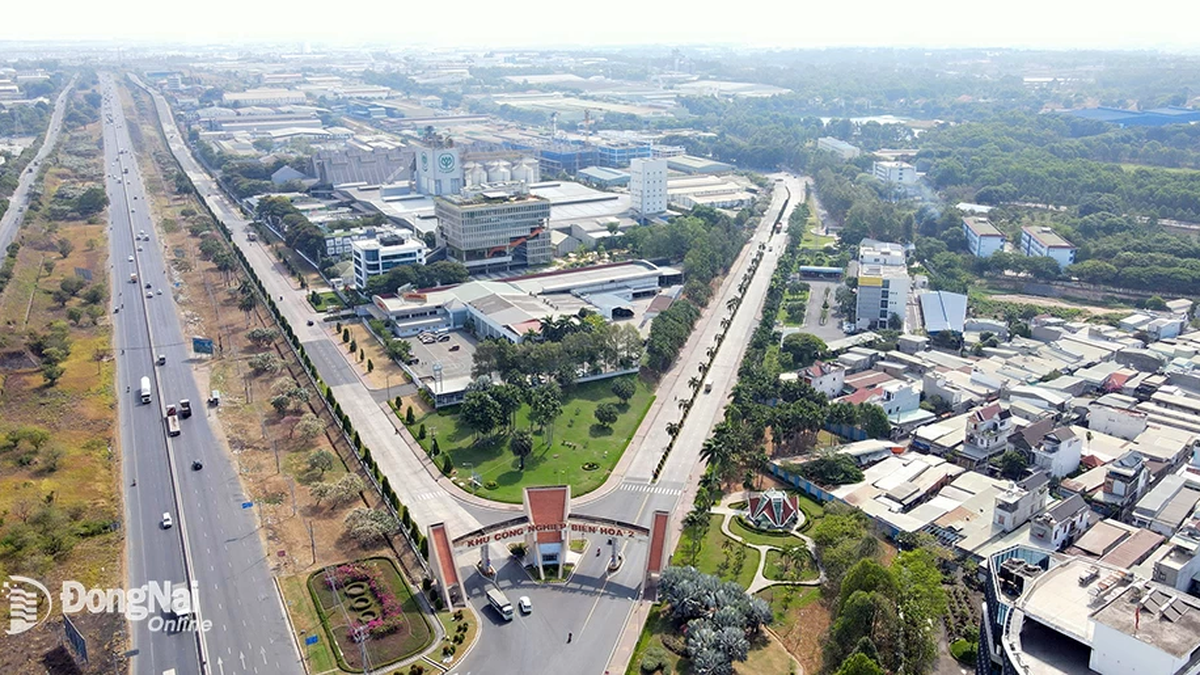Cyclone Mocha made landfall on Sunday with winds of up to 195 km/h, toppling electricity poles and smashing wooden fishing boats. At least 46 people died in the villages of Bu Ma and nearby areas in Rakhine state, home to the Rohingya Muslim minority.

Myanmar people in the affected area clean up the rubble after the storm. Photo: AP
Thirteen people were killed when a monastery collapsed in a village in Rathedaung township, in the Rakhine state capital Sittwe, and one woman was killed when a building collapsed in a neighboring village, according to Myanmar's state broadcaster MRTV.
“There will be more deaths, because more than a hundred people are missing,” said Karlo, headman of Bu Ma village near Sittwe. Nearby, Aa Bul Hu Son, 66, prayed at the grave of his daughter, who was found on Tuesday morning.
Many residents in the area are walking along the shoreline in search of family members swept away by the storm and cyclone. Nine people have died in the Dapaing Rohingya refugee camp near Sittwe. “People can’t get to the camp because the bridge is broken… we need help,” said an official at the camp.
Mocha was the biggest cyclone to hit the region in more than a decade, destroying villages, uprooting trees and cutting off communications across much of Rakhine state.
China said it was “ready to provide emergency disaster relief,” according to a statement on the Facebook page of its embassy in Myanmar.
The UN refugee office said it was investigating reports that Rohingya living in refugee camps had been killed by the storm.
In neighboring Bangladesh, officials said no one was killed in the storm, which passed near the vast refugee camps where nearly a million Rohingya have fled since 2017.

A girl picks up what's left in the rubble. Photo: AP
Cyclones are a frequent threat along the northern Indian Ocean coast, home to tens of millions of people. Rising temperatures may have contributed to the intensity of Cyclone Mocha, according to the nonprofit ClimateAnalytics.
“We can see that sea surface temperatures in the Bay of Bengal are significantly higher than they were 20 years ago,” said Peter Pfleiderer of the organization. “Warmer oceans allow storms to gather strength quickly, and this has devastating consequences for people.”
Photos released by Myanmar state media showed aid for Rakhine being loaded onto a ship in the country’s largest city Yangon. However, Rohingya villagers say they have yet to receive any assistance.
“No government , no organisation has come to our village. We have not eaten anything for two days... We have nothing and all I can say is that no one has even come to visit us,” said Kyaw Swar Win, 38, from Basara village.
Bui Huy (according to AFP, AP, CNA)
Source





































































































Comment (0)